Ontology Review: Neo Based Decentralised Trust Network
Ontology is a project that has been getting quite a bit of attention lately. One that has been slowly creeping up the rankings on Coin Market Cap.
It is also one of the most promising projects to come out of the Neo ecosystem, which is itself quite a revolutionary blockchain. Ontology is looking to build a "decentralised trust network" where users control their data and can effectively "assetize" it.
So, this sounds interesting but is it worth it?
In this Ontology review, I will attempt to answer that. I will also analyse the long term use cases of ONT and its pricing potential.
What is Ontology?
While Ontology touts itself as a public blockchain, and it is that, it was created to serve the needs of corporate clients, those who require privacy and aren’t looking to share their data on a private blockchain.
This makes Ontology a blockchain-as-a-service (BaaS) platform, which is becoming quite common. Ontology is attempting to provide corporate users with an easy way to benefit from the decentralized and distributed nature of the blockchain.
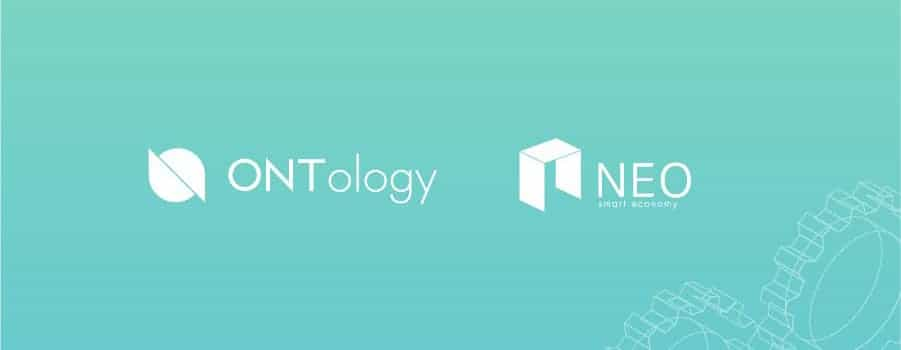
Ontology users will find ID management, smart contracts, a decentralized data exchange, and the ability to create their own digital assets and applications that can be hosted on the Ontology dApp platform.
Ontology was created by the same developers who created NEO, which is why you’ll see similarities between the two, such as a dual token system, where ONT is the same as NEO and ONG provides power for the network in the same fashion that GAS powers the NEO network.
Ontology Background
Ontology was created by a Chinese tech company called Onchain that’s been involved with the development of distributed network architecture and blockchain solutions for businesses since 2014. Onchain was founded by Da HongFei, who remains the CEO, and Erik Zhang, who holds the position of CTO.
These two were also the creators of Antshares in 2016, and this blockchain later became NEO. In the meantime, they also launched Ontology in November 2017.
There are similarities between NEO and Ontology, but there are also distinct differences that make both valid and necessary networks. It should also be pointed out that even though there is overlap between the management and development of the two projects they are separate.
Onchain oversees both, but Onchain remains separate from the two projects as well.
Ontology Technology
What makes Ontology unique from other blockchain projects is that it isn’t just a single blockchain, but is a network of blockchains that was designed to make it easy for enterprise users to migrate proprietary systems to distributed ledger technology with minimal downtime and disturbance of the systems involved.
While the main blockchain is public, the other chains attached are like a private space for the enterprise. It gives them the benefits of blockchain technology quickly and easily, without the need to hire a development team or worry about security, which is provided by the main Ontology blockchain.
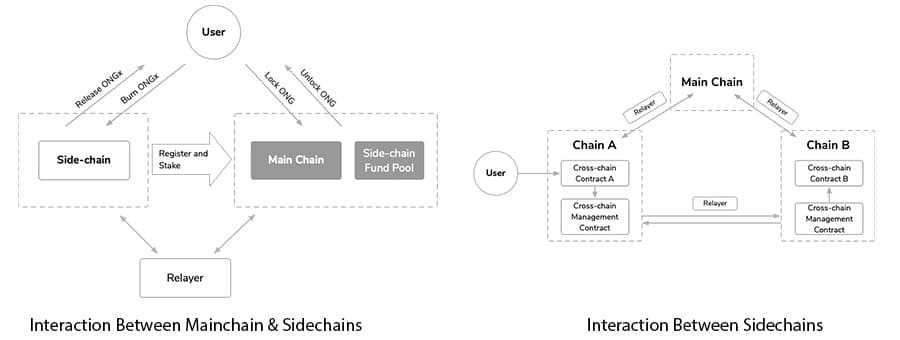
Besides the differences in the two networks, you’ll also find several similarities in the design of NEO and Ontology, which shouldn’t be surprising considering they share some of the same development team.
One of the key similarities is that they are both smart contract platforms used to host decentralized applications (dApps) and are competitors of the Ethereum network.
Ontology was developed to specifically address the enterprise usage problems encountered with the Ethereum network. The major issue comes because Ethereum is open-source, but many enterprises aren’t interested in an open-source platform because they prefer to keep their data proprietary and safely away from prying eyes.
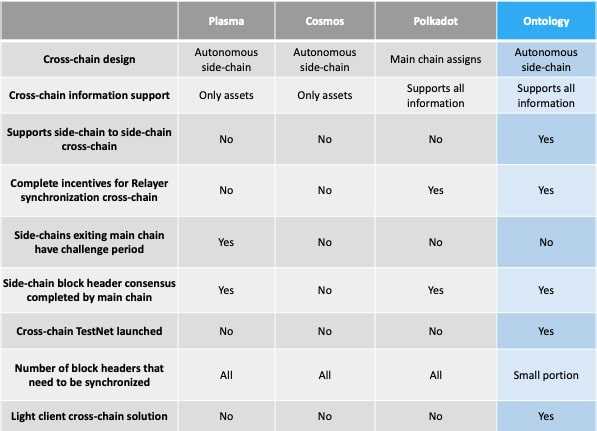
Ontology has an additional role besides supporting enterprise needs, and that’s to act as a bridge between NEO and legacy systems. And unlike many existing blockchain projects, Ontology is unconcerned with its cryptocurrency becoming a consumer-facing transactional currency. Instead, it is focused on the needs of its enterprise user base.
While you might suppose the lack of concern with becoming a transactional currency might be a negative for price growth, in fact, it could help support the price of the ONT token, but I’ll show later how the ONT and ONG currencies work together, the value of each, and how they’ve been accepted by exchanges and cryptocurrency markets.
Potential Use Cases
Everything discussed above is simply the setup of the company and some theoretical ideas. Here we get into the meat of Ontology, or how it is necessary for enterprise users, and how it can help the business world.
In order to really understand this, we need to have an understanding of the workings of enterprise business systems. We can do this through an examination of the banking business, which will show how Ontology and NEO will be able to work together and provide serious competition for the likes of Ethereum and other smart contract platforms.
In many cases, the banks don’t actually handle many of the loan servicing functions. Instead, they outsource these functions to third-party vendors who specialize in loan servicing.
This is an efficient setup and works well for all those involved. One factor that needs to be addressed however is security and privacy. As you can imagine, a huge organization such as Capital One isn’t going to give an outside vendor full access to their systems.
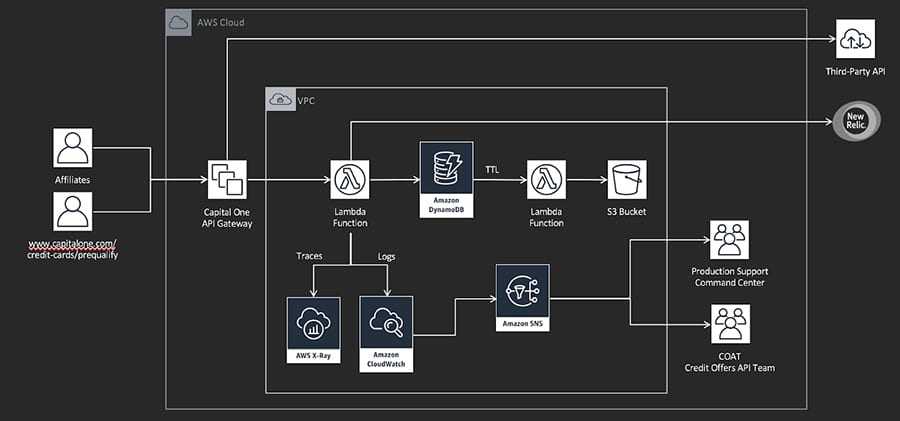
That would be a breach of security and would put private and proprietary information at risk. And there’s no reason a vendor who handles loan servicing functions would need full access to the Capital One systems.
In order to make this work Capital One has data stored in a series of proprietary systems and software platforms. This allows them to segregate the data and give access only to those who need it to perform a function or service for the bank.
Internal Capital One employees would access the data through an internal software platform, which would give them the access they need. Third-party vendors could also access the same data, but in a more limited fashion through a web portal designed specifically for third-party access. And even tighter access could be granted, perhaps view-only, through a different web portal.
All of these systems are getting their data from the same Capital One database, and they are synced and updated regularly, in some cases this could even be in real-time.
Ontology Solution
With so many systems working together to provide data to those who need it you can imagine how difficult it would be to migrate to a new system. Not just banks, but also health care facilities, governments, insurance companies, and other organizations require privacy in their data.
In some cases, it is to protect trade secrets, but in others, it could be for regulatory compliance or consumer protection. In many of these cases, it is illegal for the organizations to allow outsiders access to customer data.
This has created difficulties for blockchains like Ethereum and NEO, which were designed to support enterprise usage, but because they are public, open-source platforms, the very enterprises they are meant to support are unwilling or unable to use them because they could lose control of their data.
And that’s where Ontology becomes so incredibly useful...
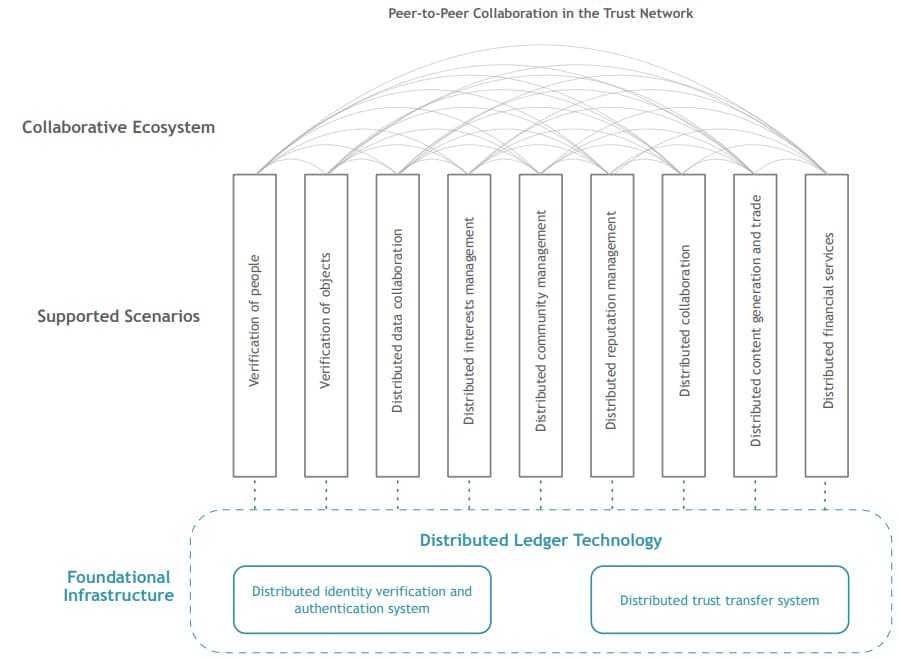
Because Ontology allows for a network of blockchains it is similar to the traditional systems being used in banks and hospitals and the like. It allows the enterprise to maintain control over access to their data.
Rather than making the data public and combining it with all the other public data being stored, the data is kept separate, and the enterprise decides who has access to the data, and which data might be shared with the NEO ledger, making it public.
Ontology keeps the enterprise data tightly controlled, and the enterprise has the ability to do as they like with their own data, either keeping it internal to their own organization, giving limited access to third-parties, or making it entirely public.
Ontology dApps
Ontology has recently ventured into the world of dApps and currently lists a total of 39 available dApps. Nearly all are game dApps, including a retro Super Mario game. The top games are multi-player online virtual world called ONTLAND and the RPG game HyperDragons Go!
Ontology Team & Community
The Co-founder and Chief architect behind Ontology is Jun Li. He has a Bachelor’s degree in Computer Science, Master’s in Communication Engineering and an MBA.
He has a long background in the IT and Fintech sector. For example, he previously provided technical architecture and management support for firms including Infosys as well as the China Financial futures exchange.

In terms of the broader Ontology team, there are over 200 core members that span a number of different technical disciplines. They are also spread out in offices located in Asia, Europe and North America.
In terms of the broader community, Ontology has a pretty strong following. This would make sense given that many people who have backed Neo have a de-facto interest spreading awareness for Ontology.
Over on their Twitter account they have over 80k followers. This is more than we have seen on other cryptocurrency projects. These followers are also engaged and help share announcements on this Twitter account.
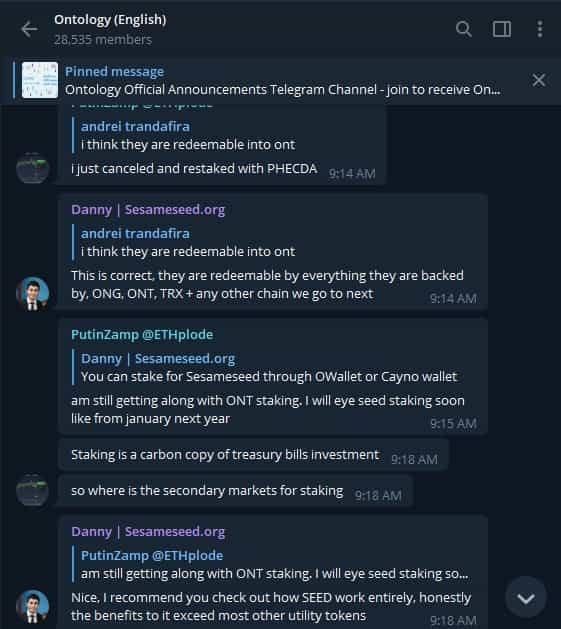
Then, taking a look at their Telegram, they have over 28k members in their main group chat. I jumped in to get a better sense of the conversation. It's really quite engaged and there is a healthy balance of technical & news related conversation.
To top it off, there is also a Discord server that has about 16k members as well as a Reddit subreddit. In this subreddit there are are also about 16k subscribers and there is a relatively healthy discussion going on there.
So, all in all, a strong team and a healthy community.
Ontology Tokens
There are a total of 1 billion ONT tokens, but the circulating supply is just over half of that amount. The reason is that very little of the ONT supply was distributed to the community.
In fact, just 12% of all ONT tokens were distributed to the community in a series of airdrops to NEO holders, Ontology newsletter subscribers, and others. Fully 35% of the ONT tokens were put aside for Ontology, and 28% are held by institutional investors. In addition, there was 15% distributed to the Ontology core team, and 10% is held by the NEO Council.
These tokens were released as NEP-5 tokens on the NEO blockchain but were later swapped for native tokens after the June 30, 2018 launch of the Ontology mainnet.
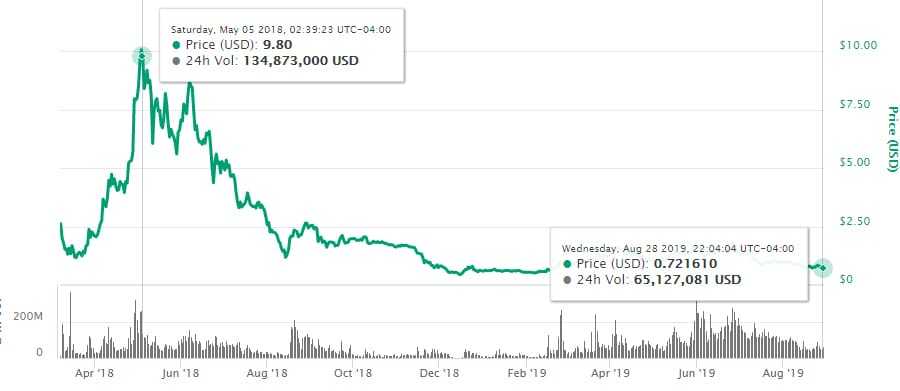
The ONT token was first listed on exchanges in March 2018 and debuted at a high over $3. It soon was trading under $2, but by the end of March had climbed back above the $2 level. It climbed rapidly in April 2018, gaining momentum as it reached the end of the month above $9.
It charged into May 2018 and reached an all-time high of exactly $10.00 on May 3, 2018. After that, it retreated steadily until reaching its all-time low in December. It spent most of 2019 above $1, but has recently dipped and trades at just over $0.77 as of August 28, 2019.
As for the ONG token, it is generated and paid out to nodes for securing the network. There will be a total of 1 billion ONG produced over a period of 22 years. Users can stake ONT with the node owners to receive a portion of the ONG payments. Currently, the yield for staking is 3.19% annually.
Buying / Storing ONT & ONG
Markets for the ONT and ONG tokens are similar, but a bit different. For example, the Bibox exchange is the top exchange for ONT, but it is only second for ONG, being beaten out by BKEX.
There are a good number of exchanges for trading ONT, including OkEx, Binance, Hit BTC and Huobi Global. For ONG you would want to head to Binance, Digifinex, MXC, or a number of other exchanges.
When it comes to volumes of ONT, they appear to be pretty high and well spread out across the exchanges. This means that liquidity is not concentrated in the hands of any singular exchange.

In terms of the liquidity on the individual exchanges, it is also quite healthy. For example, if we were to take a look at the Binance order books they appear to be deep and there is high turnover. This means that it could be easier to execute larger block orders.
You can store your tokens in the desktop OWallet, which is a native Ontology wallet, or in the mobile ONTO wallet, which combines coin storage with a cryptographically secured ID that allows you to take control of your data and build trust over time.
Development & Roadmap
It can sometimes be tough to tell exactly how much work has been done a project. This is because team's often embellish their progress.
That is why I like to dive into their GitHub repository. The amount of code that is being pushed is one of the best ways to determine direct protocol updates.
Hence, I decided to look into the Ontology Network's GitHub. Below are the total commits for the top three pinned repositories over the past year.
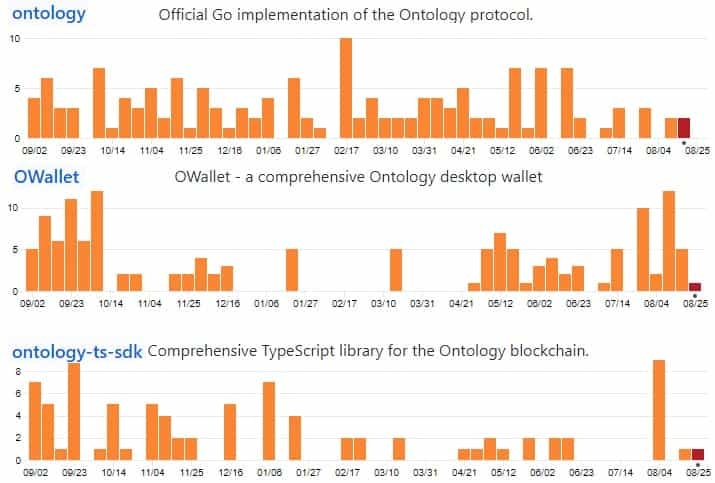
As you can see, the developers have been quite busy pushing code with a fairly regular stream of commits to all repos. There are also a further 36 other repositories in their GitHub with varying levels of commits.
This is about in line with some of the other projects that we see in the crypto space. This level of development does indeed make sense giving the major milestones that the project met over the past year.
Here are some of the most notable updates that were rolled out:
- May 2018: VBFT Consensus Algorithm Released
- Jul 2018: ONTO app released
- Feb 2019: Ontology Development Platform on Google Cloud
- May 2019: Multichain Design Released
- May 2019: Ontology WASM TestNet
In terms of what to look forward to, the project does have some interesting updates planned. These include a multi layer and multichain business ecosystem to be rolled out in late 2019. And then, in 2020 we can look forward to a Heterogeneous cross-chain POC.
If you wanted to keep up to date with the latest from the project then you can head on over to their official blog.
Conclusion
Ontology wants to make it easier for enterprises to move their data to distributed ledger systems, which are considered more secure, immutable and trustless.
They also seek to increase trust through the use of blockchain-based IDs. This could save a huge amount of resources that currently go towards guaranteeing trust.
The project certainly has a solid team behind it who understand the challenges facing the stated goals. It’s promising to see that the token has remained in the top 30 cryptocurrencies, and thanks to the ties to NEO it’s entirely probable that Ontology will continue to grow and prosper, taking over the blockchain needs of the business world.
Disclaimer: These are the writer’s opinions and should not be considered investment advice. Readers should do their own research.
